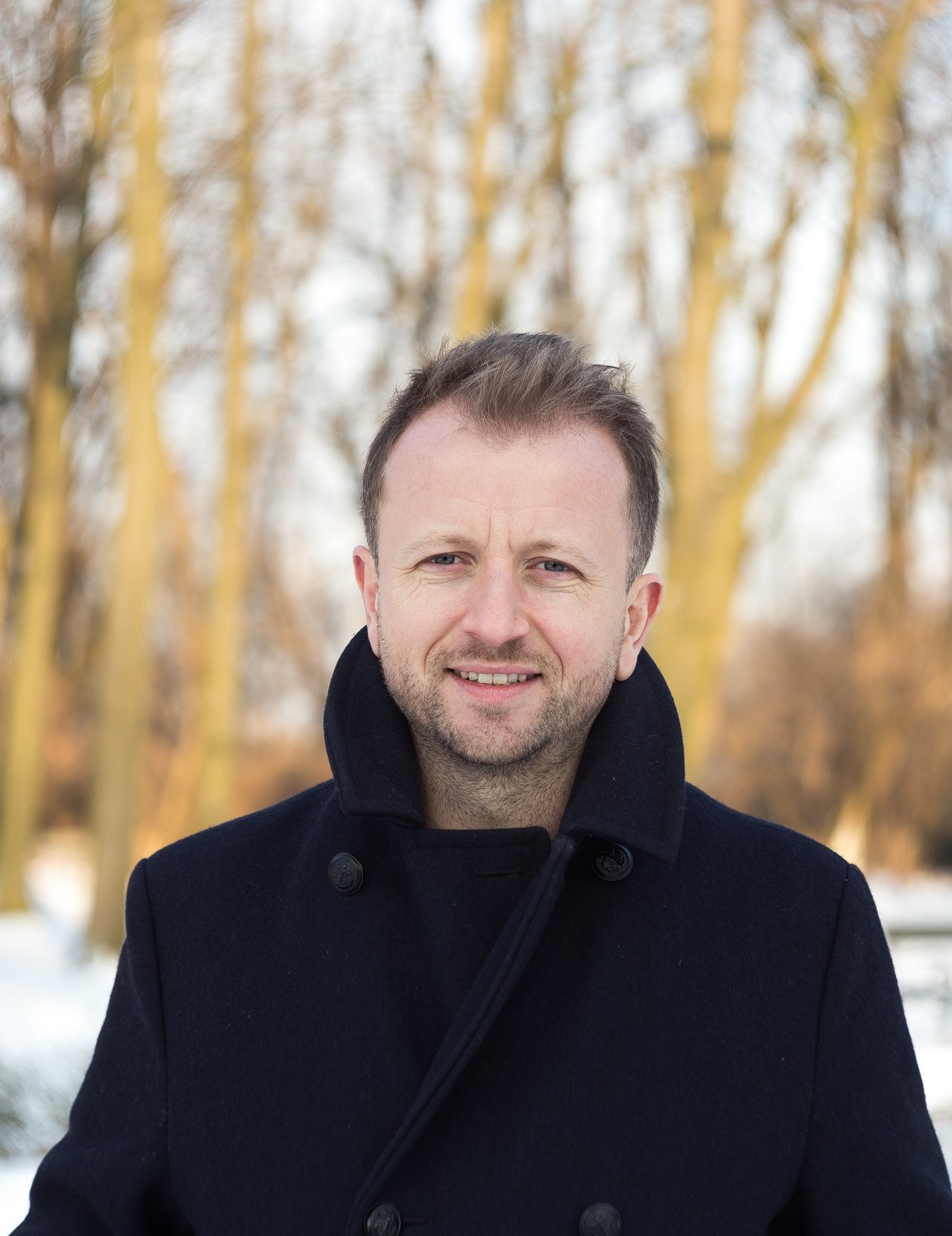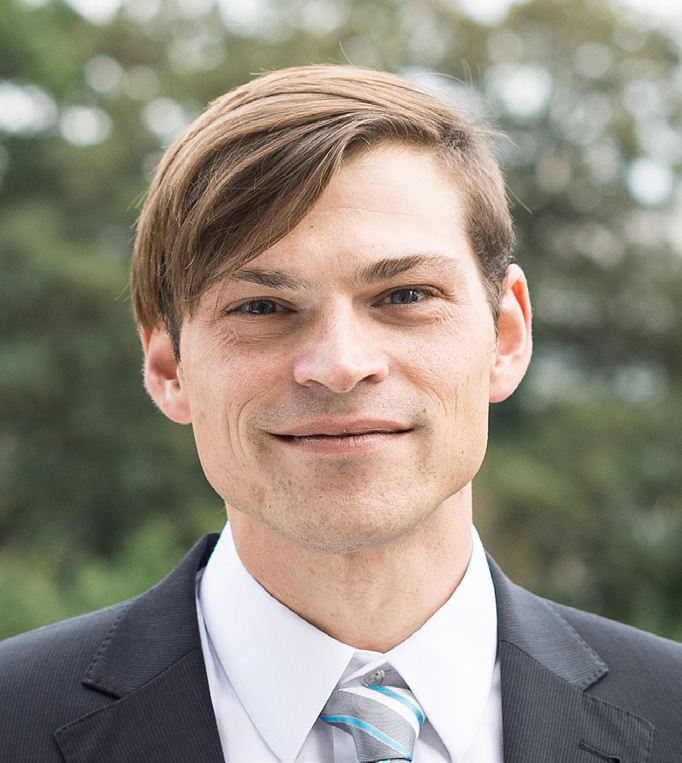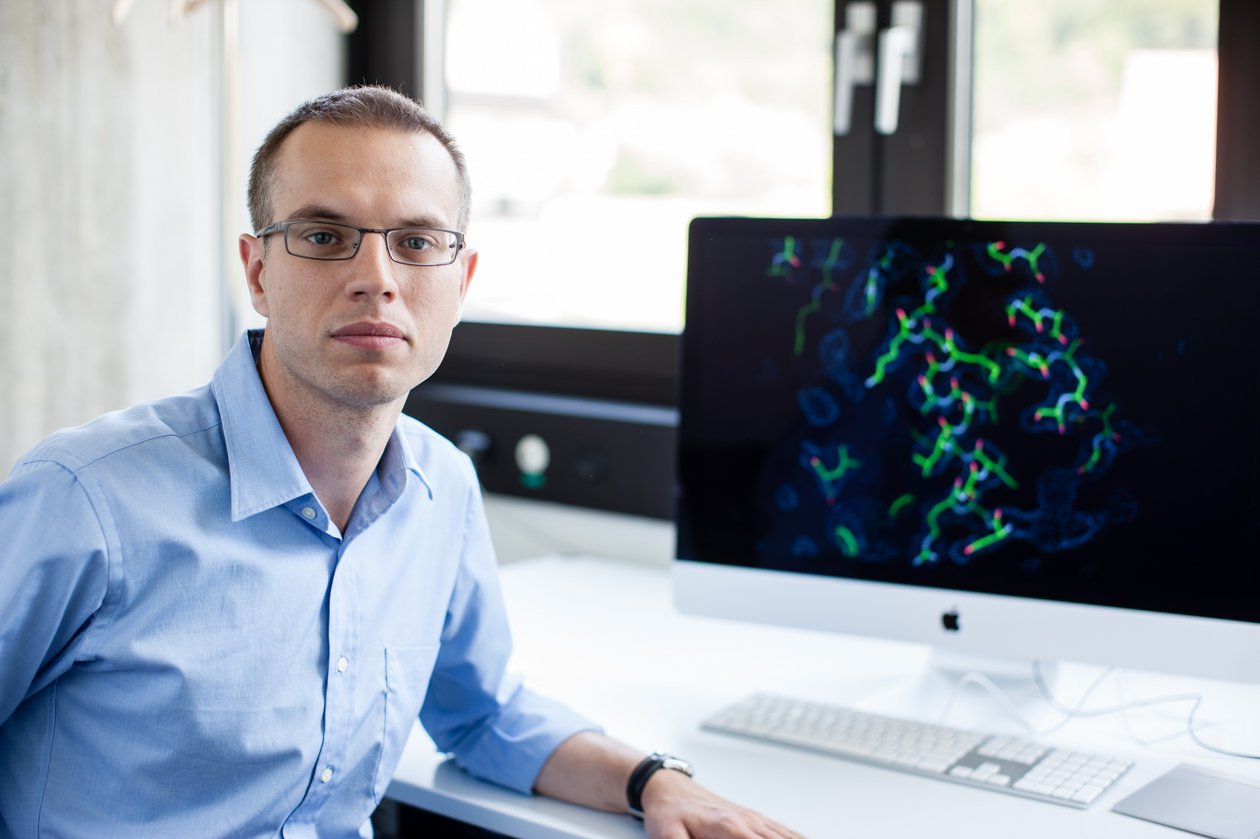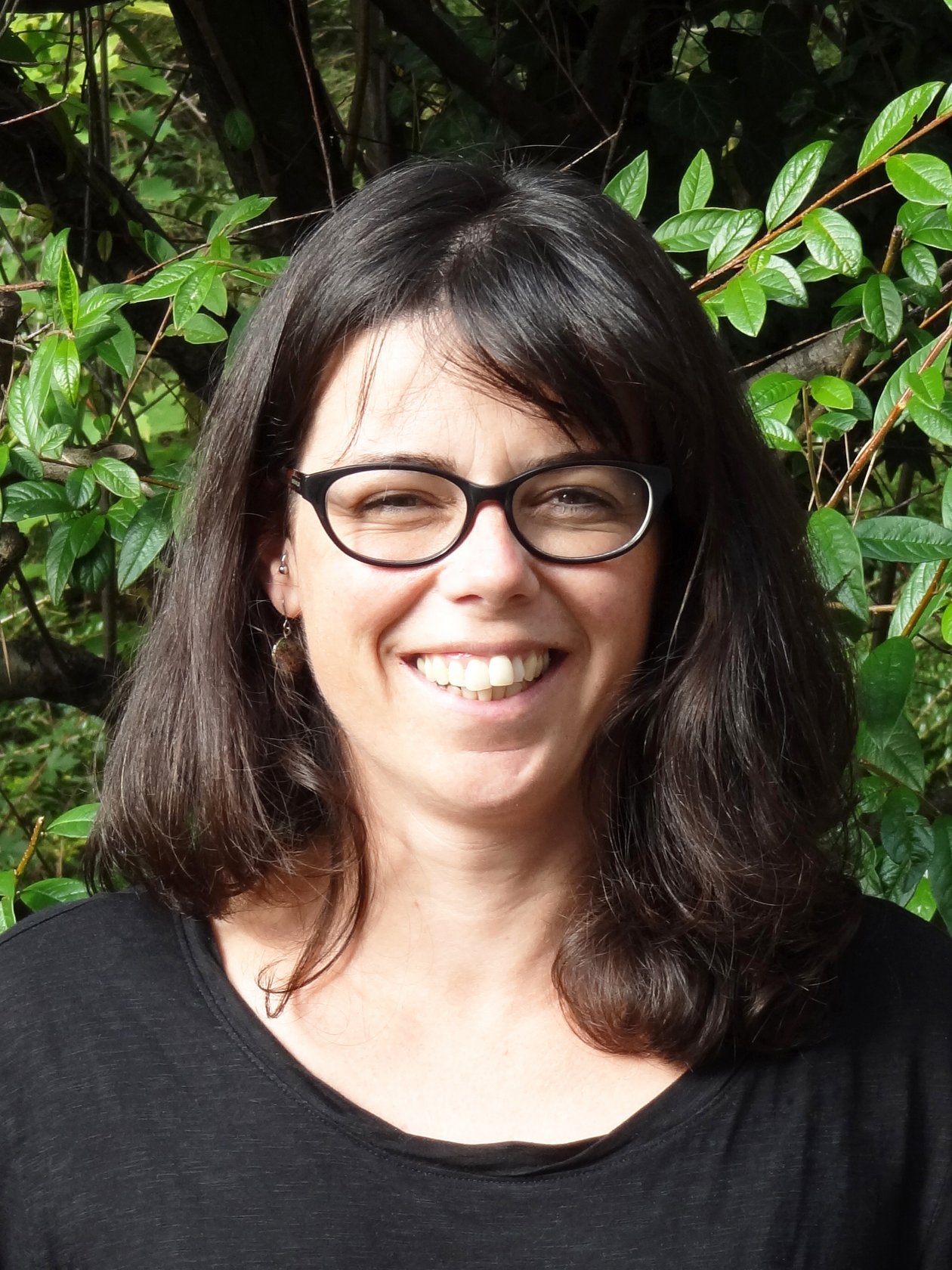Fostering the new generation of Swiss RNA researchers
A major goal of the NCCR RNA & Disease is to raise the next generation(s) of scientists in the field of RNA and Disease.
Besides training young scientists at the master, PhD and postdoc level, for which we offer lectures, training courses, workshops, summer schools, seminars, and lab exchange grants, another important group of researchers that we particularly care about are our junior principal investigators (junior PIs). By supporting and mentoring promising junior group leaders, the NCCR contributes to the future of its research field. Our junior PIs were all within their first four years of running their independent research group at the time they applied to join the NCCR and obtaining a tenured position is their next career challenge. David Gatfield is the first of our NCCR’s junior PIs to achieve this crucial career transition and we congratulate him for his new position as tenured associate professor at the University of Lausanne since February 2017.
The junior PI groups not only benefit from receiving NCCR funding for their research but also by gaining access to the network’s activities and facilities. The junior PIs also profit from the advice and feedback from the more senior principal investigators of the network and they are encouraged to ask one of them to be their mentor. In exchange, the junior PIs are an extremely valuable addition for the NCCR by expanding the network’s research and expertise areas and the collaborative projects resulting from this.
Given the importance of our junior PIs, we decided to feature them in this issue of The Messenger by presenting short portraits of the five junior PIs who joined the NCCR in 2015 and three longer articles on the new junior PIs. Jeffrey Chao and Marc-David Ruepp were the two successful candidates of last year’s call for junior PIs. They will formally join the NCCR at the beginning of year 4 in May. The third new junior PI is Rory Johnson who holds the NCCR-sponsored assistant professor position at the University of Bern since last November.
Jeffrey Chao – NCCR RNA & Disease Junior PI
Tracking single RNAs in living cells to elucidate their life cycle
Besides RNA metabolism, another continuum in Jeffrey Chao’s research is the study of biological macromolecules by applying complex methods based on electromagnetic waves. After graduating with a bachelor’s degree in molecular biology from Pomona College in 1999, Jeff went on to do his PhD in the lab of Jamie Williamson at the Scripps Institute in San Diego. There he made use of waves situated at rather opposite extremes of the spectrum of known electromagnetic waves by applying X-ray crystallography and biomolecular Nuclear Magnetic Resonance Spectroscopy to study protein-RNA interactions with atomic resolution. Jeff then worked in Robert Singer’s lab at the Albert Einstein College of Medicine in the Bronx first as a postdoctoral fellow and then as an instructor. There he continued with structural studies and in addition started to develop and apply methods to study single mRNAs in living cells by using fluorescence microscopy adding another part of the spectrum of electromagnetic waves used in his research. In January 2013, Jeff started his own lab at the Friedrich Miescher Institute in Basel.
At the FMI, the Chao lab aims to characterize the lifecycle of individual mRNAs from transcription through translation to degradation with spatial and temporal resolution in single cells. These studies rely on cells that express transcripts containing unique RNA sequences that can be recognized by chimeric fusions of the cognate high-affinity RNA-binding protein with a fluorescent protein. The presence of multiple copies of the RNA sequence allows imaging of single reporter transcripts and tracking them over time using fluorescence microscopy experiments. The Chao lab has pioneered the use of multi-color single-molecule RNA imaging to move beyond simply visualizing mRNAs to being able to ask specific questions about the fate of the transcripts. In collaboration with the Ephrussi and Singer labs, they developed the TRICK (translating mRNA imaging by coat protein knock-off method) technique for imaging the first round of translation(1). The reporter transcript contains two different RNA tags that enable labeling of a transcript in both the coding sequence and the 3? UTR with spectrally distinct fluorescent proteins (red and green). Once the reporter RNA is transcribed the green fluorescent protein sensor binds to the coding region and the red fluorescent sensor to the 3’-UTR making it appear yellow. Subsequently, during the first round of translation, the green fluorescent sensor is knocked-off by the ribosome and the reporter transcript appears red, allowing determination of the location and time of this event. The Chao lab is currently working to develop additional biosensors to study other events in the life cycle of an mRNA also in the context of their NCCR funded research. In another branch of their research the Chao lab studies RNA-protein complexes through the use of structural approaches. Chao states that the NCCR offers the possibility through collaboration to modify and adapt the imaging methods developed in his to study different processes and answering new questions.

scientific community will provide both inspiration and critical feedback, which I will surely benefit from.”
Rory Johnson – NCCR RNA & Disease Junior PI
Long noncoding RNAs and their role in human diseases
Legend holds that some of the gold reserves of the Swiss National Bank are stored beneath the Parliament Square in Bern. No rumor is that Bern since November 2016 is the location of a lab called GOLD (Genomics of Long noncoding RNA and Disease) headed by Rory Johnson. He graduated in 2000 with a Master of Science in Physics from Imperial College London, performing his Masters Thesis on protein-engineering in the lab of Stephen J. Curry. Subsequently, Rory was awarded a Welcome Trust 4-Year PhD scholarship to work with Noel J. Buckley (University of Leeds, UK), where he used microarray and bioinformatic approaches to investigate genome regulation by the transcription factor REST (RE1 Silencing Transcription Factor). For his postdoc he moved to the Genome Institute of Singapore where he was first a postdoctoral researcher and then a research associate in the lab of Lawrence W. Stanton. During this time, he became interested in the little-known field of long non-coding RNAs (lncRNAs). From 2010 until 2016 he was Staff Scientist and Ramon y Cajal Researcher at the Centre for Genomic Regulation in Barcelona. Here he participated in several international consortia: ENCODE (the Encyclopedia of DNA Elements), GENCODE (annotation of lncRNAs) and PCAWG (PanCancer Analysis of Whole Genomes). At the end of 2016, Rory set up his own lab at the Department of Clinical Research of the University of Bern, and affiliated with the Department of Medical Oncology of the University Hospital Bern.
The GOLD lab uses a combination of bioinformatics and wet lab experiments to discover long noncoding RNAs (lncRNAs) involved in disease, with an emphasis on cancer. In order to study such lncRNAs experimentally, the lab developed a vector system called DECKO (Double Excision CRISPR Knockout), which enables one to silence lncRNAs of interest. Importantly, DECKO is also amenable to high-throughput functional screens. This introduces the need for a bioinformatics tool to efficiently design the large number of targeting sequences; to this end the team has developed the CRISPETa pipeline, which can also be used through a web interface (1).
Another approach to identify lncRNAs involved in disease is the analysis of large=scale genomics datasets by dedicated bioinformatics tools. Using this approach, a bioinformatics pipeline called ExInAtor was developed and used to predict “cancer driver” lncRNAs by analyzing 1123 genomes derived from 23 cancer types (2). Consult the research highlights on page x of this newsletter for more information regarding the publication describing these findings. Additional research efforts in the Johnson lab involve contributing high quality annotation of genomes, the use of RNA sequencing data as clinical diagnostics and the large-scale study of sub-cellular localization of lncRNAs, which could provide important clues regarding their mechanisms of action.
Of the two projects carried out in the context of the NCCR RNA & Disease, one will take the functional screening approach in cells to identify lncRNAs functions and the other aims at bioinformtically predicting further lncRNAs driving cancer, which will then be validated experimentally. Several collaborations with other NCCR RNA & Disease labs are planned as well as with oncologists at the University Hospital Bern. Johnson mentions that the NCCR organized events are facilitating being up to date on the latest developments in the field.
(1) Pulido-Quetglas C. et al. (2017) PLOS Computational Biology 13(3), e100534

Marc David Ruepp – NCCR RNA & Disease Junior PI
RNA metabolism and neurological diseases
Since the beginning of his scientific career, Ruepp has been fascinated by RNA. Graduating with a major in Biochemistry from the University of Bern in 2005, Ruepp decided to follow his passion and performed his doctoral studies in the group of Prof. Dr. Daniel Schümperli (University of Bern) from 2006 to 2009. During this period, he mainly focused on mRNA 3’ end formation. His specific interests for misregulated RNA metabolism and neurodegenrative diseases emerged while he contributed towards a study on a somatic gene therapy approach for spinal muscular atrophy during his time in the Schümperli lab. For his postdoctoral research, Ruepp remained faithful to his interests and joined the group of Prof. Dr. Oliver Mu?hlemann (University of Bern) in 2010, where he studied nonsense mediated mRNA decay. At the same time Ruepp’s urge to understand relations between RNA metabolism and neurological diseases intensified and he therefore developed his own research focus. Since 2014, he is an independent junior group leader at the Department of Chemistry and Biochemistry at the University of Bern. The long-term objective of his reaserach is to elucidate the selective motor neuron death in Amyotrophic Lateral Sclerosis (ALS), a fatal disease that leads to progressive muscle wasting and paralysis. Towards this end, the Ruepp group pursues two principal objectives: deciphering the physiological function(s) of the FUS (Fused in Sarcoma) protein and elucidating the pathogenic mechanisms associated with ALS-associated FUS mutations.
FUS is an hnRNP-like RNA-binding protein and when mutated it can lead to the development of Amyotrophic Lateral Sclerosis (ALS). Unraveling the biological functions of FUS will allow to study which of these functions are affected by ALS-associated mutations and how this in turn leads to neurodegeneration. A collaborative project of the Ruepp and Schümperli groups has revealed contributions of FUS towards replication-dependent histone gene expression by interacting with U7 snRNPs and histone specific transcription factors (1). The recent discovery of the Ruepp group that FUS is involved in splicing of minor intron containing pre-mRNAs revealed a new potential pathomechanism in ALS (2). Furthermore, misregulated minor-intron splicing has emerged as a common feature in neurological diseases including for example SMA (Spinal Muscular Atrophy) and TDP-linked ALS.
The NCCR RNA & Disease – funded project of the Ruepp lab will focus on pathomechanistic aspects of ALS causing mutations in FUS. Within the RNA & Disease, Ruepp’s research integrates in and complements well the RNA metabolism cluster where it will intensify already existing collaborations and has great potential to connect to the current project portfolio on RNA binding proteins and neurological diseases. His research will also reinforce the disease link of the network. Besides benefitting from the scientific excellence and having the opportunity to exploit from mentoring by internationally renowned scientists, Ruepp also recognizes the opportunities for the researchers in his group: “The possibility for my students to enroll in the RNA Biology PhD program and participate in NCCR RNA & Disease events such as the annual retreat, allows them to learn from and interact with top-class RNA scientists and facilitates the exchange with other students promoting bottom-up collaborative projects”.
(1) Raczynska K.D. et al. (2015) Nucleic Acids Research 43(20), 9711-28

junior group leaders in the same field as well as to learn and receive mentoring from established and internationally renowned scientists.”
Constance Ciaudo
Functions of RNA interference factors in mammalian stem cells
Constance Ciaudo is since April 2013 assistant professor at the Institute of Molecular Health Sciences at ETH Zurich. Her laboratory works on understanding the role of RNA interference factors and RNA binding proteins in fundamental mechanisms in mammalian stem cells such as regulation of pluripotency and maintenance of genomic integrity. Thus, her research contributes knowledge for the future use of stem cell for treating diseases, sheds light on embryogenesis processes and uncovers new roles of RNA proteins binding to it in cellular processes. The Ciaudo lab recently published a paper on the non-canonical function of a subunit of the microprocessor complex in controlling exit of stem cells from pluripotency (1). This paper is featured as a research highlight on page XY of this newsletter. An example of a fruitful NCCR collaboration was the Ciaudo lab applying their expertise in mammalian stem cell biology to assess the biological effect of a compound discovered in the lab of Jonathan Hall. The compound targets a RNA protein interaction known to be important in the differentiation of stem cells and applying the compound to murine embryonic stem cells induced their differentiation (2). Ciaudo states that access to the NCCR supported technology platforms is a very valuable benefit from being part of the NCCR. For her lab the RNA synthesis platform provides important research reagents.
(1) Cirera-Salinas D. et al. (2017) Journal of Cell Biology 216(2), 355-366
(2) Roos M. et al. (2016) ACS Chemical Biology 11(10) 2773-2781

David Gatfield
Post-transcriptional gene regulation and circadian rhythms
Since February 2017, David Gatfield is an associate professor at the Center for Integrative Genomics at the University of Lausanne, the same institute where he previously held the position of an SNSF assistant professor. Research in the Gatfield lab focuses on the post-transcriptional regulation of gene expression in the context of biological timekeeping by circadian clocks. A specific interest lies in translational regulation. Of note, daily gene expression oscillations form the molecular basis of the daily variations detected across vital processes in the mammalian body, touching on metabolism, physiology and behavior; it is thus a specific interest of the Gatfield lab to explore connections between rhythmic RNA regulation and human health. Furthermore, environmental cues influence aspects of these rhythms, and their analysis is integrated in the experimental approaches as well. In recent publications, the Gatfield lab described novel roles for temporal regulation of translation efficiency and for upstream open reading frames in biological timekeeping in mouse liver and kidney (1,2). The Gatfield lab will venture together with the Mühlemann group in a study that assesses how NMD and circadian clocks are connected, and team up with Ulrike Kutay to assess the translational specificities of ribosomal variants. Gatfield mentions that being a member of the NCCR was especially important during 2016 when the future location of his lab was uncertain. During this period he could not apply for grants and the NCCR funding allowed him to keep core personnel employed, which are now the basis for efficient rebuilding of the group. Moreover, for David Gatfield also the moral support was helpful during this crucial career transition.
(1) Janich P. et al. (2016) Genomics Data 8, 41-4

provides visibility within the home university and
across Switzerland, and is a fantastic platform for
collaborative endeavors.”
Martin Jinek
Roles of protein-RNA complexes in cellular processes
Martin Jinek is since February 2013 tenure track assistant professor at the Institute of Biochemistry at the University of Zurich. The Jinek laboratory investigates the function of protein-RNA complexes in cellular processes using structural, biochemical and functional approaches. One the research interests of the lab is prokaryotic CRISPR-Cas systems, which are bacterial defense mechanisms against viruses. These systems have recently emerged as powerful molecular tools for precision genome engineering, which provided entirely new possibilities for basic research and could also be applied for therapeutic purposes. The focus of Jinek’s studies is the genome editor nuclease Cas9, whose molecular structure and mechanism was uncovered by the lab in 2014 (1). In 2016 the group published further structural work on engineered Cas9 variants (2). The Jinek lab additionally studies eukaryotic RNA processing and modification pathways. The current NCCR-funded research project in the Jinek lab, which is carried out in collaboration with the research group of Ulrike Kutay, investigates proteins involved in ribosome biogenesis. Another area of research is the m(6)A RNA methylation, a dynamic RNA modification that plays important roles in regulating the function and stability of eukaryotic mRNAs. The group recently determined the structure of the writer complex that mediates m6A methylation (3). Collaborations with other NCCR groups will explore this and other topics in the future. Jinek points out that participation in NCCR organized events has provided valuable interactions for him and his group and an opportunity to receive feedback from other NCCR researchers.
(1) Anders C. et al. (2014) Nature 513(7519), 569-73
(2) Anders C. et al. (2016) Molecular Cell 61(6), 895-902

Ana Claudia Marques
Contributions of long-noncoding RNAs to homeostasis and disease
Advances in next-generation sequencing technologies have revealed that a large proportion of the human transcriptome, of which only a small part codes for proteins, consists of intergenic long non-coding RNAs (lincRNAs). Although only <1% of them have been functionally characterized, lincRNAs have been shown to regulate gene expression programs through diverse mechanisms. The role of these non-coding transcripts in cellular homeostasis, phenotypic variation and disease is the research topic of Ana Claudia Marques, who is a SNSF assistant professor since October 2014 at the Department of Computational Biology in the University of Lausanne. Her lab employs a combination of computational and experimental approaches to shed light on this enigmatic class of transcripts. The Marques lab recently published a bioinformatics study that revealed a subset of human complex trait-associated lincRNAs are involved in cis-regulation of gene expression through the modulation of local chromosomal architecture (1). NCCR funds the Marques lab to investigate the contributions of lincRNAs to cell cycle progression. The group has ongoing collaborations with the Ciaudo and Polymenidou labs. In addition to her research, Ana contributes to the overall success of the NCCR as its delegate for equal opportunities. Ana appreciates that her and her group members can participate in NCCR organized events, such as the annual retreats, summer schools and workshops. However, her only regret is that due to being based in Lausanne, it is less practicable for them to attend the NCCR seminars held in Bern and Zurich.

Magdalini Polymendiou
RNA binding proteins and neurodegenerative diseases
Magdalini Polymenidou is an SNSF assistant professor at the Institute of Molecular Life Sciences of the University of Zurich since September 2013. Her lab studies the molecular mechanisms underlying amyotrophic lateral sclerosis (ALS) and frontotemporal dementia, which are fatal and currently incurable neurodegenerative diseases. In both diseases accumulations of RNA-binding proteins such as TDP-43 and FUS occur. Moreover, in the most common genetic form of these diseases, an atypical form of RNA translation takes place leading to the production of dipeptide repeat proteins (DPRs), which are abnormal and toxic protein products. The Polymenidou group together with other groups published a review article summarizing the current knowledge of the involvement of small RNAs in disease including cardiovascular, inflammatory, muscle and neurodegenerative diseases (1). The Polymenidou lab uses ex vivo mouse and human nervous system cultures as novel disease models to study these processes. In the context of the NCCR the dynamic functional polymerization of TDP-43 was discovered in collaboration with the lab of Frédéric Allain. The manuscript describing these findings was recently accepted for publication in Nature Communications (2). Magdalini Polymenidou appreciates the vibrant scientific community of the NCCR RNA & Disease, from whose more senior members she receives valuable input but also profits from the peer group of junior PIs within the network. One of her PhD students received through the NCCR an SNF mobility grant, which enabled a half year-long stay at the Massachusetts General Hospital in Boston in a collaborator lab.
Publications:
- Hruska-Plochan M. et al. (2015) Swiss Medical Weekly 145, w14192
- Afroz T. et al. (2017) Nature Communications, in press
Website Polymenidou Lab

‘budding’), which enable research that would not
be possible without this NCCR.”